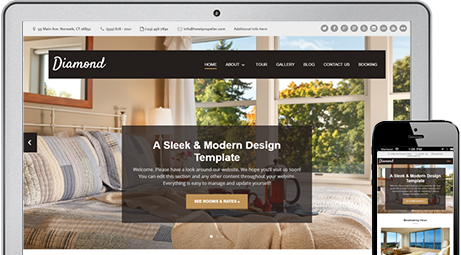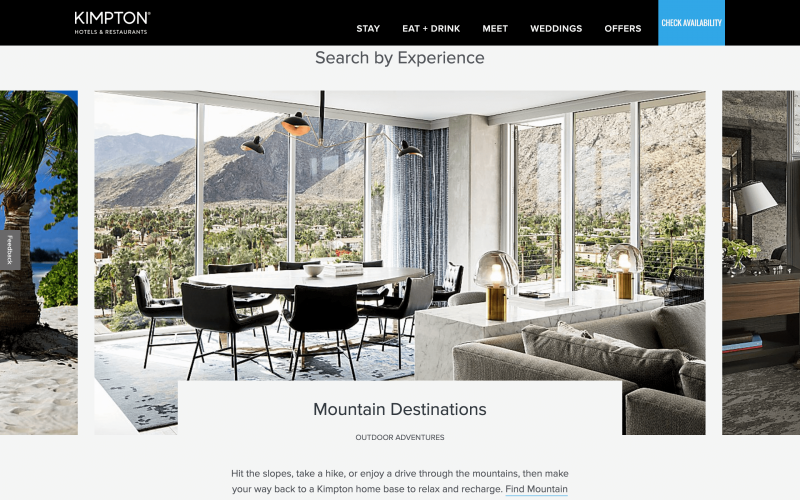In today’s digital world, a hotel’s website often serves as the first point of contact for potential guests. A well-designed website not only showcases the hotel’s offerings but also plays a crucial role in shaping its brand image. Effective web design can enhance a hotel’s online presence, create a memorable experience for visitors, and ultimately drive bookings. Here’s a closer look at how web design influences your hotel’s brand image and some best practices to keep in mind.

Table of Contents
Toggle1. First Impressions Matter
When potential guests land on your hotel’s website, their first impression is often formed within seconds. An aesthetically pleasing and user-friendly design can capture their attention and encourage them to explore further.
Key Elements to Consider:
- Visual Appeal: Use high-quality images that showcase your hotel’s unique features, such as stunning views, luxurious accommodations, and inviting amenities.
- Consistent Branding: Incorporate your hotel’s branding elements, such as colors, logos, and typography, throughout the website to create a cohesive look that reflects your brand’s identity.
- Professional Layout: A clean and organized layout with intuitive navigation helps visitors find information quickly, enhancing their overall experience.
2. User Experience (UX)
A hotel’s website should prioritize user experience to ensure that visitors can easily find what they need, whether it’s room availability, amenities, or local attractions. An effective UX design reduces friction and guides potential guests toward making a booking.
Best Practices:
- Mobile Responsiveness: With more travelers using mobile devices to search for accommodations, ensure your website is mobile-friendly. A responsive design adapts to different screen sizes, providing a seamless experience across devices.
- Fast Loading Times: Optimize your website for speed. Slow loading times can frustrate visitors and lead them to abandon your site in favor of competitors.
- Clear Calls to Action (CTAs): Use prominent CTAs that guide users toward booking a room, signing up for a newsletter, or exploring special offers.
3. Storytelling through Design
Your hotel’s website should tell a story that resonates with your target audience. Web design can help convey your hotel’s unique personality and atmosphere, allowing visitors to connect emotionally with your brand.
Techniques to Enhance Storytelling:
- Engaging Content: Use compelling descriptions, testimonials, and stories that highlight the experiences guests can have at your hotel.
- Visual Storytelling: Incorporate videos or interactive elements that showcase the ambiance and experiences at your hotel, such as a virtual tour or a behind-the-scenes look at your staff in action.
- Highlight Local Attractions: Feature nearby attractions and experiences that complement your hotel stay, helping guests envision their trip and the unique offerings of your location.
4. Building Trust and Credibility
A professional website design enhances your hotel’s credibility and instills trust in potential guests. When visitors perceive your hotel as reputable, they are more likely to book a stay.
Elements to Establish Credibility:
- Guest Reviews and Testimonials: Showcase positive reviews prominently on your website to demonstrate the experiences of previous guests.
- Certifications and Awards: Display any awards, certifications, or affiliations with reputable organizations to reinforce your hotel’s standing in the industry.
- Secure Booking Process: Ensure that your booking system is secure and easy to use. Including trust badges and secure payment options can further enhance confidence in your hotel.
5. SEO and Discoverability
Web design also plays a vital role in search engine optimization (SEO). A well-structured website helps search engines understand your content better, which can improve your visibility in search results.
SEO Best Practices:
- Optimized Images: Use descriptive file names and alt tags for your images to enhance discoverability.
- Clear URL Structures: Implement clean and descriptive URLs that accurately reflect the content of each page.
- Content Quality: Regularly update your website with relevant content, such as blog posts about local events or travel tips, to keep your audience engaged and improve SEO.
Conclusion
In conclusion, web design is a powerful tool for enhancing your hotel’s brand image. By focusing on aesthetics, user experience, storytelling, credibility, and SEO, you can create a compelling online presence that attracts potential guests and converts them into loyal customers. Investing in quality web design is not just about creating a visually appealing site; it’s about crafting a memorable experience that reflects your hotel’s values and hospitality. As the first touchpoint for many travelers, your website is a crucial element in establishing your brand identity and driving business success.


No responses yet